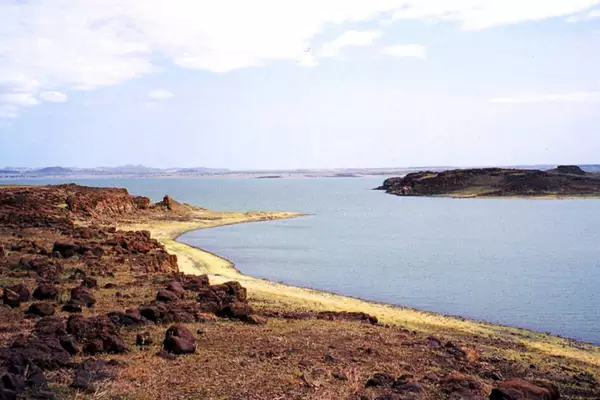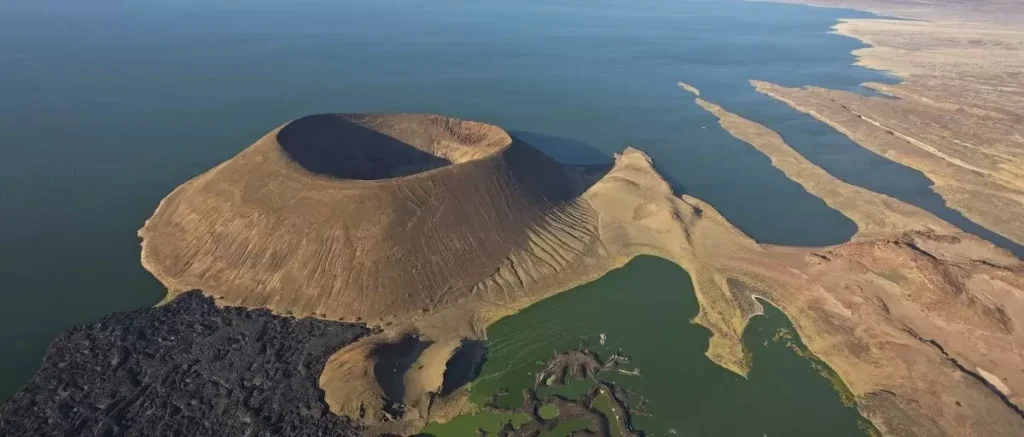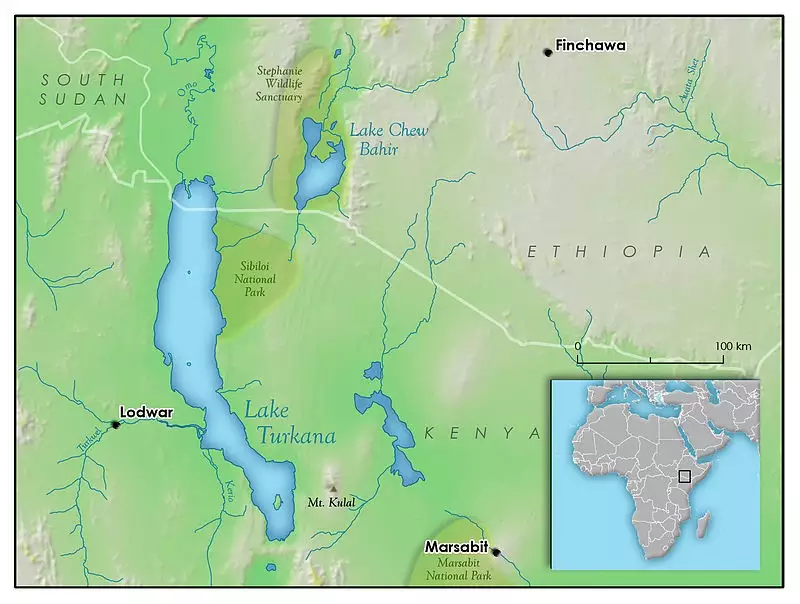The initial findings from a research project led by UNESCO and World Food Program (WFP), funded by the Dutch Government, recently revealed high fish potential in Lake Turkana of Africa.
About Lake Turkana:
- Lake Turkana is Africa’s fourth-largest lake, covering approximately 7,500 sq km, and also the largest permanent desert and alkaline lake in the world.
- It is situated in the remote northern region of Kenya, and experiences extreme aridity, with average annual rainfall less than 200 mm.
- The Omo River, which contributes over 90% of the lake’s inflow, is often referred to as the “umbilical cord” of Lake Turkana, driving its limnology, ecology, and fisheries.
- Lake Turkana hosts a diverse range of species, including 79 fish species, 12 of which are endemic, along with the largest population of Nile crocodiles in Africa.
- Approximately 1 million people living in the Turkana region rely on the lake for their livelihoods, primarily through pastoralism, fishing, and some crop farming.
- The lake’s water levels fluctuate by up to 8 meters per decade due to high evaporation rates and variable inflows.
- This UNESCO World Heritage site plays a critical role in the lives of local communities, particularly those in the Turkana region.
Key Findings from the Research Project:
- UNESCO and the World Food Programme (WFP), initiated a 10-year research project aimed at unlocking the economic potential of Lake Turkana.
- The WFP is the world’s largest humanitarian international organization within the UN, that provides food assistance worldwide, it was founded in 1961 at Rome.
- It focuses on food security and the economic well-being of vulnerable populations around the lake, through integrated food systems approach.
- The survey identified significant concentrations of both large and small pelagic species.
- Small pelagic species were found to be abundant and highly productive but remain largely underutilized.
- These species, which are fished by light attraction at night and are not easily overfished, constitute more than 70% of African inland fisheries catches.
- They are highly nutritious, affordable, and can be processed in an environmentally friendly manner through sun-drying.
Ref: Source
| UPSC IAS Preparation Resources | |
| Current Affairs Analysis | Topperspedia |
| GS Shots | Simply Explained |
| Daily Flash Cards | Daily Quiz |
Frequently Asked Question:
Where is Lake Turkana located?
Lake Turkana is situated in the remote northern region of Kenya, in East Africa.
What makes Lake Turkana unique?
Lake Turkana is Africa’s fourth-largest lake and the largest permanent desert and alkaline lake in the world. It is known for its extreme aridity and high evaporation rates.
What is the primary source of water for Lake Turkana?
The Omo River is the main source of inflow for Lake Turkana, contributing over 90% of its water. This river is often referred to as the lake’s “umbilical cord.”




